Here are Jan's thoughts:
Those of you who are familiar with my beliefs as discussed on the forums and so on will already be aware that I am not a Celtic pagan. However, interestingly, the primary festivals of my tradition mostly align very similarly with the Celtic Wheel. I have elected to speak here about the things that I directly associate with each festival from my own standpoint, just to give you a little contrast and variation, but also – and perhaps more importantly – to emphasise how differing traditions all over the world tend to share some common attributions. For me this is how it should be. What rests at the centre of faith is a many-facetted crystal – each of those facets connected to a slightly different path. What is important here is to recognise that, no matter what path you personally choose to follow, they all lead home in the end. They just do it from different angles.
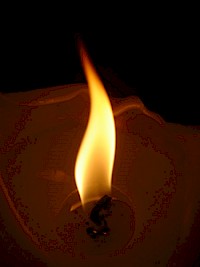
Imbolc is known as Lights in my tradition – fairly obvious connections there then eh? It awakens us from the Sleep which begins with the Winter Solstice, and lasts for almost two Moon cycles. During this period we remain as dormant as possible – though of course we all need to continue our day jobs.
Lights occurs as a fixed ceremony on the 2nd February. The festival is dedicated to Isis, though on occasion Nephthyss may be invoked as a reaction to how the Sleep has gone – if we have experienced interference or other turbulence during Sleep we will call Nephthyss for her ability to awaken the dead under her protection. But most usually it is to Isis we turn.
We have an impressive collection of candleholders which tend to get expanded each year, and all of these are spread across an altar and lit, stage by stage until the room is ablaze with light. All our candles are white. And I suspect we are going to be in need of an altar extension in the none too distant future.
Traditional flowers here are snowdrops, set in swan vases (the bird is sacred to Isis) and sometimes, if they come through early enough, violet crocuses. Meditation is often very fruitful on this day, introducing many images for dawning and rising light of one sort and another.
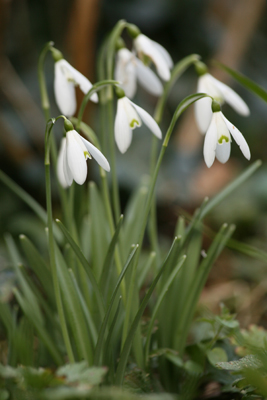
We also plant seeds on this day, and ask for blessings for their well-being and strength. This usually necessitates me giving the airing cupboard a good turn-out, and getting rid of accumulated rubbish from the last year, so I have room for seed trays. Mostly we tend to plant herbs here, since I have no heated greenhouse and they will usually thrive reasonably well on a window-sill until they are strong enough to be potted on and hardened off. Oddly enough this is the only way I ever manage to grow parsley from seed, no matter how many other methods I try. The same is true of coriander – and the basil and chervil tend to take off like rockets. Later sowings rarely match them in pace of growth or abundance.
For me, this is an exciting celebration. It welcomes the goddess into my life for the first time in the year, and I have an opportunity to affirm my dedication to Her. I am writing this piece in the middle of January, and when I wander around in my (very chilly) garden right now, I can see the first shoots of spring bulbs, tiny little buds beginning to form.
The magnolia is throwing forth promises of abundant pinkish white cup-shaped blossoms very soon, and the weeds are picking up their devilish sprouting. So far this has been a mild winter (I hope I didn’t just speak too soon there) and there have only been a couple of real frosts. I can feel the land beginning to change its pulses of energy, as the Goddess lifts slowly out of her slumber; inside me eagerness and anticipation begin to build in expectation of our awakening and reunion.
This time of the year is the “quickening” – the moment where dormancy gives way to the very first stirrings of life. It is a time to let go of what has hurt or harmed us, what freezes our souls, what brings us to inertia. Instead now all is hope and belief in the future. Life prepares, again, to explode into bright flashes of beauty: we are renewed and reinvigorated.
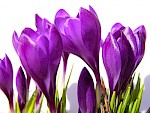
Now, not everybody wants to engage in full scale ritual to mark a celebration like ours. But there are several smaller-scale things you can do to meet Imbolc/Lights in your own life. You could perform a cleansing on your home, by smudging every room (this could be incorporated with Graham’s suggestions for inviting light into your house, which follow).
Remember that every act can be transformed into a magickal one by being underpinned with your intent. Get yourself a sage smudge stick, and then, starting with the highest room in your house, and the most easterly, with your smudge stick lit and smoking, pass it in a circle in each room with the intent of cleansing that room of any negative energy – you can say this out loud if you like. Go next to the southernmost room of your house and so on until you have worked your way back to the east again. Then go downstairs, and repeat the process.
By employing your intent, you can welcome in the new energies by turning out a cupboard or drawer, or cleaning the fridge – helpful activities anyhow, but when done with an intent to welcome in cleansing energies, even more effective.
Or you could plan a cleansing bath, during which you can “lose” unhelpful habits or old and negative memories. Get yourself some cleansing essential oils – lavender, basil, peppermint, juniper are all good choices. You’ll also need a few white candles. Now, run yourself a bath, knowing that it will cleanse you of sadness, bad habits, and negativity. Add several drops of your essential oil, light your candles and settle in for a fragrant and refreshing consideration of the things you want to “lose”. When you’re ready, hop out and wrap yourself in a fluffy bath towel, and then run away your bathwater, and watch your “impurities” gurgle off down the drain. Give the bath a good rinse, extinguish your candles, feeling fresh, clean and ready for the year.
And here are Graham's thoughts:
To start with the basics, when and what is Imbolc? It's traditionally celebrated on the 2nd of February and is a festival of lights and candles. The patron goddess of this festival is Brighid who's an Irish Goddess. Many of her attributions survived by being transferred to St Bridget who's from the Celtic Church. Both are associated with fire, light and candles. These associations gives Brighid dominion over aspects of smithing, and arts and crafts, because fires were often used by blacksmiths and other makers of things. She also is associated with midwifery and the safe bringing of new life into the world.
I like Imbolc because it feels like a secret among Pagans and Druids. If you were to ask the general public about paganism or witchcraft and how they celebrated, the first thing they'd think about is Druids at Stonehenge, the Summer Solstice and Halloween. Some with deeper knowledge might mention the Winter Solstice or even Beltane, also known as Mayday. But Imbolc is one of those hidden festivals which makes it a bit special. It's also a festival of light in what is usually the coldest, grimmest part of the year weather wise.
The Wheel of the Year predates Christianity, but it comes from a culture where nothing was written down. Therefore, anything we learn about it tends to come from cultures who had writing, namely the Romans and then the Christians. In essence, when we are looking back at these festivals, it is always through the lenses held by these two cultures. Christianity in particular has preserved many festivals by adopting them into their own calendar.
Imbolc appears to have emerged relatively unscathed from this process. In the Church calendar, the beginning of February is Candlemas – when the candles for the upcoming year are blessed. It also links back to the midwife attribution of Brighid in marking the point at which the Virgin Mary became pure again after giving birth to the Christ.
If you look around on the Internet there is a lot of misattribution out there connecting this festival with sheep giving birth and stating that Imbolc is about the ewes starting to produce milk. The natural life cycle of sheep means that this would be the time at which early farmers would be separating out those sheep obviously pregnant and giving them more food and special care, ready for lambing around the Vernal Equinox. Most of what has survived as information on this festival comes from Ireland including the name - Imbolc literally means “in the belly”. In our family it has been nicknamed “Fat Sheep Festival”!
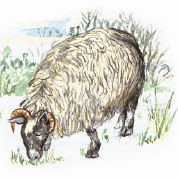
The idea of sorting pregnant sheep provides a good metaphor for the kind of energies needed on this day. You could see it as a form of spring cleaning that can apply in a range of areas – thoughts and beliefs, projects and physical objects. Whichever realm you choose to spring clean, sort through it methodically and decide what will bear fruit this year and what can be discarded. Make space, whether it's in your home, your head or in your life, for those things you want to manifest so that they can grow appropriately. And without feeling bad, discard those things that are either holding you back or that you no longer have any need for.
While we're on the subject of useful activities for Imbolc, a nice house blessing ritual is to wait for sunset (if you can) then switch on every light in your house, open all your curtains and cupboards, and let light wash through your house. You can, if you're careful, also light candles too, especially in the windows to throw light out into the world. (If you do this, I’ll reiterate the warning about being careful – candles and curtains don’t mix!)
This time of year is the very beginning of Spring. Blackthorn is associated with this festival as it usually starts blossoming around this time. It's worth taking a side note here to talk about timings. Imbolc, in history, was usually celebrated at the beginning of February. Astrologically, the midpoint between the Winter Solstice and the Vernal Equinox is usually around the 4-5 of February and some pagans celebrate based on observing signs of Spring, so they would wait for the Blackthorn blossom for example, even if it was two weeks late! My own view is that all the eight festivals represent a peak in an ever shifting flow of energy from one state to another. So, around the beginning of February the energy will have made its maximum shift away from Winter Solstice and towards those of Imbolc. But, if either through circumstance or belief, you celebrate a bit either side of the traditional date, then you'll still pick up on most of the energy of the season.
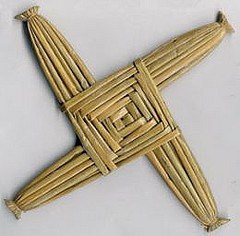
Traditional symbols for this day include any variation of the Bride's Cross, which is a solar symbol with either three or four legs. It's traditionally a woven creation, of reeds or corn-stalks, but can be made from anything as long as the over and under, warp and weft effect is kept. As previously mentioned, candles and lights are key to this festival. This is an Air festival so it's more about the light of the returning sun than the heat of it. In addition to Blackthorn, Silver Birch is a sacred tree for this time of year.. In terms of colours, we always go with a light blue and white. Not pale and wishy-washy, but a vibrant pale blue, if you see what I mean!
Food on this day is associated with milk – partly due to the sheep lactating reference which may be wrong – but also because Brighid is a childbirth goddess. We tend to have a Pesto based dish on this day as it’s one of the few easily found foods that features ewe's milk! In the UK at least, though, some of the larger supermarkets are now offering sheep’s milk yoghurt. In Ireland, drop scones are known as Bridie Cakes.
These are really good fun to make with children as it's a simple recipe that they can mix up and then let a grown up cook. Also, they're a great finger food that most kids love! The other food I put in my book was a ploughman's lunch. When I think about the festivals, I always ask myself what Neolithic Man would have been eating. At this end of the year, there would have been the end of all the preserved meats left, along with pickled vegetables and chutneys. Add in some fresh spring greens (might be a bit of a stretch in early Feb) and a home made bread roll, and you've got a ploughman's lunch. Even boiled eggs wouldn't be too far off the mark either!
So, that’s my take on Imbolc. A returning of life to the world after the cold, inward looking rest of winter. A time to celebrate the very beginning of spring and longer, lighter days.
